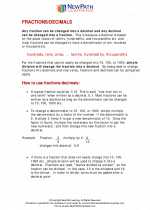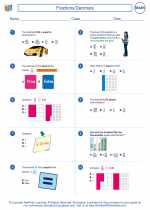Fractions/Decimals -> multiply
Multiplication
Multiplication is a fundamental arithmetic operation that represents the process of adding a number to itself a certain number of times. It is often denoted by the symbol "x" or by placing the numbers next to each other, such as 3 x 4 or 3 * 4.
Basic Multiplication
When multiplying two numbers, the first number is called the "multiplicand" and the second number is called the "multiplier." The result of the multiplication is called the "product." For example, in the expression 3 x 4, 3 is the multiplicand, 4 is the multiplier, and 12 is the product.
Multiplication Properties
Multiplication has several important properties, including the commutative property (changing the order of the numbers does not change the product), the associative property (changing the grouping of numbers does not change the product), and the distributive property (multiplication distributes over addition).
Multi-digit Multiplication
When multiplying multi-digit numbers, the process involves multiplying each digit of one number by each digit of the other number and then adding the partial products to obtain the final product. This can be done using the standard algorithm or other methods such as the lattice method or the grid method.
Applications of Multiplication
Multiplication is used in various real-world situations, such as calculating the area of a rectangle, finding the total cost of multiple items, and determining the total distance traveled given a constant speed and time. It is also a key concept in higher-level mathematics and science.
.◂Math Worksheets and Study Guides Sixth Grade. Fractions/Decimals

 Worksheet/Answer key
Worksheet/Answer key
 Worksheet/Answer key
Worksheet/Answer key
 Worksheet/Answer key
Worksheet/Answer key
